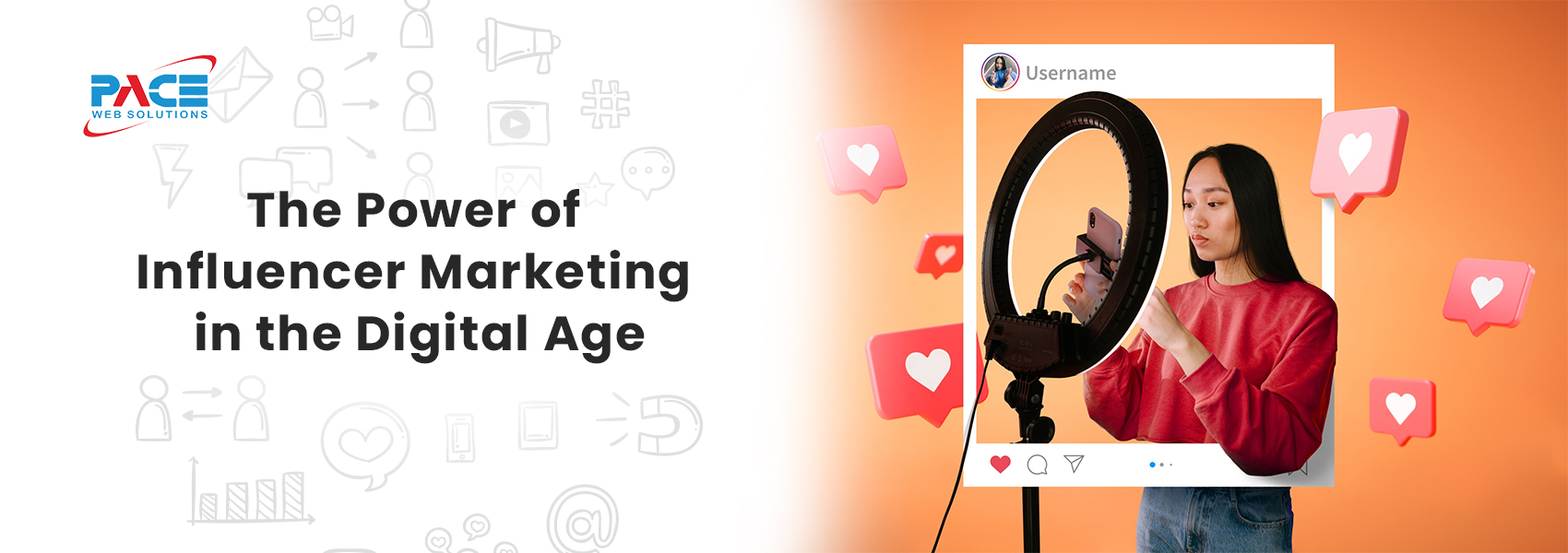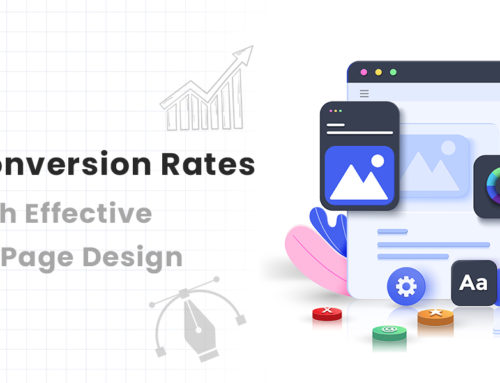Table of Contents
The Power of Influencer Marketing in the Digital Age
In today’s digital age, where social media platforms dominate our lives, influencer marketing has emerged as a powerful strategy for brands to connect with their target audience. The concept of influencer marketing revolves around leveraging the influence and popularity of social media influencers to promote products, services, or brands. With the rise of social media platforms, such as Instagram, YouTube, and TikTok, influencers have gained a massive following, creating a unique opportunity for businesses to tap into their reach and credibility.
Influencer marketing entails collaborating with social media influencers who have a significant number of followers and enjoy a loyal and engaged audience. These influencers, often experts or enthusiasts in specific niches, have established their credibility and authenticity through their content, making them trusted sources of information for their followers.
One of the primary goals of influencer marketing is to enhance brand awareness. By partnering with social media influencers, brands can expose their products or services to a vast and relevant audience. As influencers have a dedicated fan base that trusts their recommendations, they can effectively promote a brand’s offerings, generating interest and curiosity among their followers. This exposure can lead to increased brand visibility and recognition, ultimately driving potential customers to explore and engage with the brand.
Audience engagement is another crucial aspect of influencer marketing. Unlike traditional forms of advertising, influencer marketing allows for a more personalized and interactive approach. Influencers engage with their audience through various forms of content, such as videos, images, and stories. By creating authentic and relatable content, influencers can establish a deeper connection with their followers. When influencers endorse a brand or product, it feels like a recommendation from a trusted friend, leading to higher levels of engagement and potential conversions.
The growing importance of influencer marketing can be attributed to the changing dynamics of consumer behaviour. Today’s consumers are increasingly immune to traditional advertising methods and rely more on recommendations and social proof. Social media influencers have become a bridge between brands and consumers, with their opinions and experiences carrying significant weight. Their ability to influence consumer purchasing decisions has turned them into valuable marketing assets for businesses.
Understanding Influencer Marketing
1.1. Definition & Benefits of Influencer Marketing for Brands:
Influencer marketing refers to the strategic collaboration between brands and social media influencers to promote products, services, or brands to a targeted audience. It involves leveraging the popularity and influence of these individuals to create authentic and relatable content that resonates with their followers.
The benefits of influencer marketing for brands are manifold. Firstly, it helps enhance brand awareness. By partnering with influencers who have a substantial following and engagement on social media platforms, brands can tap into their established credibility and reach a wider audience. Influencers act as brand advocates, introducing their followers to new products or services and generating interest and curiosity around them.
Secondly, influencer marketing enables brands to effectively target specific demographics or niches. Social media influencers often have a well-defined audience that aligns with a particular interest, lifestyle, or industry. This targeted approach allows brands to reach the right people who are more likely to be interested in their offerings, leading to higher conversion rates and return on investment.
Moreover, influencer marketing helps build trust and authenticity. Influencers have built a rapport with their followers by consistently creating valuable content and engaging with them. When influencers endorse a brand or product, it carries a sense of credibility and authenticity, making their recommendations more trustworthy in the eyes of their audience. This trust transfer can significantly impact consumer purchasing decisions and positively influence brand perception.
Additionally, influencer marketing offers brands the opportunity to leverage user-generated content. Influencers often create unique and creative content featuring the brand’s products or services, showcasing their usage in an authentic context. This user-generated content can be repurposed by the brand across various marketing channels, providing social proof and enhancing brand visibility.
1.2. The Role of Influencers in Reaching Target Audiences:
Influencers play a crucial role in reaching target audiences due to their ability to connect with and engage their followers. Here are some key aspects of their role:
1.2.1. Reach & Visibility:
Influencers have amassed a significant number of followers on social media platforms, providing brands with access to a wide and diverse audience. Their posts, stories, and videos receive high levels of engagement, ensuring brand messages reach a substantial number of potential customers.
1.2.2. Niche Expertise:
Many influencers specialize in specific niches such as fashion, fitness, beauty, technology, or travel. Their expertise in these areas allows them to create highly targeted content that resonates with their followers’ interests. Brands can collaborate with influencers whose niches align with their target audience, ensuring their message reaches the right people with a higher chance of conversion.
1.2.3. Authenticity & Trust:
Influencers are perceived as authentic and relatable figures by their followers. Their content often reflects their personal experiences, opinions, and recommendations. When influencers endorse a brand or product, it comes across as a genuine recommendation from a trusted source, increasing the likelihood of audience engagement and purchase intent.
1.2.4. Engagement & Interaction:
Influencers actively engage with their audience through comments, direct messages, and live sessions. This two-way communication fosters a sense of community and connection, making the audience more receptive to the influencers’ recommendations. Brands can leverage this engagement to create meaningful conversations around their products, gather feedback, and gain valuable insights.
1.2.5. Storytelling & Content Creation:
Influencers excel in storytelling and content creation. They have honed their skills in creating visually appealing and compelling content that captures the attention of their followers. By incorporating brand messages into their storytelling, influencers can effectively convey a brand’s value proposition and generate interest among their audience.
Overall, influencers serve as trusted intermediaries between brands and their target audiences. They possess the ability to engage, influence, and create authentic connections, enabling brands to reach and resonate with their desired consumer segments in a more personalized and impactful way.
Finding the Right Influencers
2.1. The Process of Identifying Relevant Influencers for a Brand:
Finding the right influencers for a brand requires a systematic and strategic approach. Here is a step-by-step process to identify relevant influencers:
2.1.1. Define your Target Audience:
Start by clearly defining your target audience based on demographics, interests, behaviors, and preferences. Understanding your audience will help you identify influencers who have a following that aligns with your target market.
2.1.2. Set Goals & Objectives:
Determine your influencer marketing goals and objectives. Are you aiming to increase brand awareness, drive sales, or boost engagement? Clearly defining your goals will guide you in finding influencers who can help you achieve those objectives.
2.1.3. Conduct Thorough Research:
Use social media platforms, influencer marketing tools, and industry databases to conduct research on potential influencers. Look for influencers who are active in your industry or niche and have a significant following and engagement. Analyze their content, audience demographics, engagement rates, and brand alignment.
2.1.4. Evaluate Influencer Credibility & Authenticity:
Look for influencers who have built a strong reputation and authenticity in their niche. Consider factors such as content quality, consistency, transparency, and engagement with their followers. Assess their credibility by examining their collaborations with other brands, reviews from their audience, and their overall online presence.
2.1.5. Analyze Audience Relevance:
Assess the relevance of an influencer’s audience to your brand. Look at their follower demographics, including age, gender, location, and interests. Ensure that the majority of their followers match your target audience profile. Engage with their content to get a sense of the audience’s receptiveness to your brand or industry.
2.1.6. Consider Engagement Metrics:
Pay attention to the influencer’s engagement metrics, including likes, comments, shares, and click-through rates. High engagement rates indicate an active and involved audience that is likely to respond positively to your brand’s messaging.
2.1.7. Assess Collaboration Potential:
Evaluate the influencer’s past collaborations with brands. Consider the types of partnerships they have undertaken, the brands they have worked with, and the effectiveness of those collaborations. Look for influencers who have successfully promoted similar products or services to ensure a good fit for your brand.
2.1.8. Establish Communication:
Reach out to the shortlisted influencers and initiate communication. Discuss your brand’s values, goals, and expectations. Assess their willingness to collaborate, their level of professionalism, and their understanding of your brand’s messaging.
2.1.9. Measure & Track Results:
Once you have identified and collaborated with influencers, track and measure the results of your campaigns. Monitor metrics such as engagement, reach, website traffic, conversions, and brand mentions. Analyze the success of the collaboration in achieving your predefined goals and make adjustments for future campaigns.
2.2. Process of Identifying Relevant Influencers for a Brand:
Identifying relevant influencers for a brand involves a systematic approach to finding influencers who align with your brand’s values and objectives. Here’s a step-by-step process to guide you:
2.2.1. Define your Brand’s Values & Target Audience:
Start by clearly defining your brand’s values, mission, and target audience. Understand the demographics, interests, and preferences of your target audience to find influencers who can effectively reach and engage them.
2.2.2. Research Relevant Social Media Platforms:
Identify the social media platforms where your target audience is most active. Platforms like Instagram, YouTube, TikTok, and Twitter are popular for influencer marketing. Each platform has its own community and content style, so consider which ones best suit your brand and target audience.
2.2.3. Use Influencer Marketing Tools & Platforms:
Utilize influencer marketing tools and platforms that provide comprehensive databases of influencers. These tools allow you to filter influencers based on niche, audience size, engagement rates, location, and other relevant criteria. Some popular tools include BuzzSumo, Upfluence, and HypeAuditor.
2.2.4. Analyze Influencer Metrics & Performance:
Evaluate the influencers based on their metrics and performance. Look for metrics such as follower count, engagement rate, reach, impressions, and audience demographics. Assess the authenticity of their engagement by examining comments and the quality of interactions with their audience.
2.2.5. Consider Influencer Relevance & Alignment:
Ensure that the influencers you select are relevant to your brand and align with your brand values. Analyze their content to see if it resonates with your target audience and if they have previously collaborated with brands similar to yours. Look for influencers who can authentically integrate your brand into their content.
2.2.6. Assess Influencer Reputation & Credibility:
Research the influencers’ online presence and reputation. Consider factors such as their expertise, industry recognition, awards, and positive reviews from their audience. Check if they have been involved in any controversies or if their behavior aligns with your brand’s values.
2.2.7. Engage with Influencers’ Content:
Engage with the content of potential influencers to get a better understanding of their style, tone, and audience engagement. Comment, like, and share their posts to establish a connection and gauge their audience’s reaction to your brand.
2.2.8. Reach Out & Initiate Collaboration:
Once you have identified the relevant influencers, reach out to them through email, direct messages, or influencer marketing platforms. Introduce your brand, express your interest in collaborating, and outline your expectations and goals. Be clear about what you can offer in return, such as product samples, financial compensation, or exclusive access.
2.2.9. Track & Evaluate Campaign Results:
Monitor the performance of influencer collaborations by tracking key metrics such as engagement, reach, website traffic, conversions, and brand mentions. Evaluate the success of each collaboration in relation to your defined goals and make adjustments for future campaigns based on the insights gained.
Remember, the process of finding the right influencers requires thorough research, careful consideration, and ongoing evaluation. By selecting influencers who genuinely resonate with your brand and target audience, you can maximize the impact of your influencer marketing campaigns.
Collaborating with Influencers
3.1. Tips for Building Relationships with Influencers & Negotiating Partnerships.
Tips for building relationships with influencers and negotiating partnerships:
Building strong relationships with influencers is crucial for successful collaborations. Here are some tips for establishing relationships and negotiating partnerships:
3.1.1. Research & Personalise your Approach:
Before reaching out to influencers, thoroughly research their content, interests, and values. Personalize your communication to show that you have taken the time to understand their work and align it with your brand. Mention specific aspects of their content that resonate with your brand’s messaging.
3.1.2. Engage with their Content:
Engage genuinely with an influencer’s content by liking, commenting, and sharing their posts. Show appreciation for their work and provide valuable insights or feedback. This establishes a connection and increases the likelihood of them noticing your brand.
3.1.3. Offer Mutual Value:
Understand what the influencer wants to achieve through the collaboration. Offer value beyond monetary compensation, such as exposure to your brand’s audience, exclusive access to products or events, or unique content creation opportunities. Highlight how the partnership can benefit both parties and emphasize the value you can bring to the influencer’s audience.
3.1.4. Build Long-term Relationships:
Consider establishing long-term relationships with influencers rather than one-off collaborations. This allows for deeper brand integration and more authentic content creation. Invest in nurturing the relationship by maintaining regular communication, providing support, and recognizing their contributions.
3.1.5. Be Clear & Transparent:
Clearly communicate your expectations, goals, and guidelines for the collaboration. Discuss deliverables, timelines, and any contractual agreements upfront to avoid misunderstandings. Transparency builds trust and ensures that both parties are on the same page.
3.1.6. Allow Creative Freedom:
While it’s important to communicate your brand’s messaging and guidelines, give influencers creative freedom to express their unique voice and style. Influencers know their audience best and can create content that resonates with their followers. Collaboration should be a partnership that leverages the influencer’s creativity and expertise.
3.1.7. Measure & Provide Feedback:
Track the performance of influencer collaborations and provide constructive feedback to improve future campaigns. Share insights and metrics to demonstrate the impact of the collaboration. Acknowledge and appreciate the influencer’s efforts and celebrate their success with your brand.
3.2. Types of Collaborations.
Different types of collaborations, such as sponsored posts and brand ambassadorships:
There are various types of collaborations that brands can undertake with influencers, depending on their goals and budget. Here are a few common types:
3.2.1. Sponsored Posts:
This is one of the most straightforward forms of collaboration, where influencers create content that features or promotes a brand’s product or service. Sponsored posts can be in the form of Instagram posts, YouTube videos, blog articles, or tweets. Brands typically compensate influencers for their work, either through financial payment or by providing free products or services.
3.2.2. Product Reviews:
Brands can collaborate with influencers to review their products or services. Influencers receive the product or service to try and share their honest feedback and recommendations with their audience. Product reviews can be in the form of dedicated videos, blog posts, or social media posts, depending on the influencer’s preferred platform.
3.2.3. Giveaways & Contests:
Brands can partner with influencers to organize giveaways or contests, where the influencer promotes the brand and encourages their followers to participate for a chance to win prizes. This type of collaboration generates buzz, increases brand visibility, and helps expand the brand’s social media following.
3.2.4. Brand Ambassadorships:
Brand ambassadorships involve establishing a longer-term relationship between the brand and the influencer. Ambassadors become the face of the brand, regularly creating content that aligns with the brand’s values and promoting it across various platforms. Brand ambassadorships can include activities such as attending events, representing the brand in campaigns, and providing ongoing exposure to the brand’s offerings.
3.2.5. Influencer Takeovers:
Brands can invite influencers to take over their social media accounts for a day or a specific period. During the takeover, the influencer creates and shares content on behalf of the brand, giving their audience a behind-the-scenes look or sharing their experiences with the brand. This collaboration allows the brand to tap into the influencer’s audience and inject fresh content into their own channels.
3.2.6. Affiliate Marketing:
In affiliate marketing collaborations, influencers receive a commission or a percentage of sales generated through their unique referral links or discount codes. This type of collaboration incentivizes influencers to promote the brand’s products or services to their audience, as they earn a share of the revenue they help generate.
Each type of collaboration offers unique advantages and aligns with different campaign goals. Brands can choose the most appropriate collaboration type based on their objectives, budget, and the nature of their product or service.
Creating Effective Influencer Campaigns
4.1 Strategies for Planning & Executing Successful Influencer Campaigns.
Strategies for planning and executing successful influencer campaigns:
Planning and executing successful influencer campaigns require careful strategizing and implementation. Here are some key strategies to consider:
4.1.1. Define Clear Campaign Objectives:
Start by identifying your campaign objectives. Whether it’s increasing brand awareness, driving sales, promoting a new product, or engaging with a specific target audience, clearly define what you want to achieve through the influencer campaign. This will help shape your overall strategy and guide your selection of influencers and content.
4.1.2. Identify the Right Influencers:
Carefully select influencers who align with your brand values, target audience, and campaign objectives. Look for influencers with an engaged following and a track record of successful collaborations. Ensure their content style, voice, and aesthetics resonate with your brand.
4.1.3. Develop a Creative Brief:
Create a detailed creative brief for influencers that outlines campaign objectives, key messages, content guidelines, and any specific deliverables. Provide examples or references to help influencers understand your brand’s desired aesthetic and tone. A clear creative brief ensures that influencers understand your expectations and can create content that aligns with your brand’s vision.
4.1.4. Foster Authentic Content Creation:
Encourage influencers to create authentic and genuine content that resonates with their audience. Give them creative freedom to incorporate your brand organically into their content, allowing them to showcase your products or services in a way that feels natural and authentic. Authenticity is key to building trust and engagement with the audience.
4.1.5. Leverage Storytelling & Narrative:
Incorporate storytelling elements into your influencer campaigns. Storytelling captures attention, generates emotional connections, and creates memorable experiences for the audience. Work with influencers to develop narratives that highlight your brand’s values, product benefits, or user experiences in a compelling way.
4.1.6. Establish Clear Guidelines & Disclosure:
Ensure that influencers follow disclosure guidelines and clearly indicate their partnership with your brand. Transparency builds trust and credibility with the audience. Familiarize yourself with relevant advertising regulations and guidelines to ensure compliance.
4.1.7. Collaborate on Content Creation:
Involve influencers in the content creation process. Seek their input and ideas, as they have a deep understanding of their audience and what resonates with them. Collaborative content creation fosters a sense of ownership and investment from the influencers, leading to more authentic and impactful content.
Amplify influencer content: Extend the reach of influencer-generated content by repurposing it across your brand’s channels. Share influencer-created posts on your social media platforms, website, email newsletters, or even in-store displays. This amplifies the impact of the collaboration and exposes the influencer’s content to a wider audience.
4.2 Highlight the Importance.
Importance of clear goals, creative briefs, and tracking metrics , are essential components of a successful influencer campaign. Here’s why they are important:
4.2.1. Clear Goals:
Defining clear goals allows you to measure the success of your influencer campaign. Goals provide direction, guide your strategies and tactics, and help you evaluate the effectiveness of the campaign in achieving desired outcomes. They also ensure that you and the influencers are aligned on what you aim to accomplish.
4.2.2. Creative Briefs:
Creative briefs provide influencers with a clear understanding of your brand’s objectives, guidelines, and expectations for the campaign. They outline the key messages, content format, aesthetics, and any specific requirements. A well-crafted creative brief ensures that influencers can create content that effectively communicates your brand’s values and resonates with their audience.
4.2.3. Tracking Metrics:
Tracking and analyzing relevant metrics allow you to measure the impact and success of your influencer campaign. Metrics such as engagement rates, reach, impressions, conversions, website traffic, and sales attributed to the campaign provide insights into its effectiveness. Tracking metrics helps you understand what works and what can be improved, allowing you to optimize future campaigns.
4.2.4. Performance Evaluation:
By tracking metrics, you can evaluate the performance of individual influencers, specific content pieces, and the overall campaign. This evaluation helps you identify the most effective influencers, content strategies, and messaging approaches. It also enables you to make data-driven decisions and adjustments for future campaigns to maximize results.
4.2.5. Return on Investment (ROI) Assessment:
Clear goals, creative briefs, and tracking metrics facilitate the measurement of ROI. By analyzing the metrics in relation to your campaign objectives, you can assess the effectiveness of your influencer campaign in delivering value to your brand. This information is crucial for optimizing budget allocation, identifying successful strategies, and demonstrating the campaign’s impact to stakeholders.
Measuring ROI & Success
5. 1. Methods for Measuring the Effectiveness of Influencer Marketing Campaigns
Methods for measuring the effectiveness of influencer marketing campaigns:
Measuring the effectiveness of influencer marketing campaigns is crucial for understanding the return on investment (ROI) and overall success. Here are different methods to consider:
5.1.1. Engagement Metrics:
Monitor engagement metrics such as likes, comments, shares, and saved posts to gauge the level of audience interaction with the influencer’s content. High engagement indicates that the content resonates with the audience and generates interest.
5.1.2. Reach & Impressions:
Measure the reach and impressions of influencer content to determine the extent of its exposure to the target audience. This metric provides insights into the campaign’s potential reach and brand visibility.
5.1.3. Conversion Tracking:
Use conversion tracking tools to attribute website visits, purchases, sign-ups, or any other desired actions to the influencer campaign. This allows you to assess the campaign’s impact on driving conversions and generating revenue.
5.1.4. UTM Tracking Codes:
Implement UTM (Urchin Tracking Module) codes in the influencer’s campaign-specific links to track the traffic and conversions generated from each influencer. UTM codes provide detailed insights into which influencers are driving the most engagement and conversions.
5.1.5. Surveys & Feedback:
Collect feedback from the audience, such as post-campaign surveys or direct feedback through comments and messages. This qualitative data can provide valuable insights into brand perception, purchase intent, and the effectiveness of the campaign messaging.
5.1.6. Social Listening:
Monitor social media platforms and other online channels for brand mentions, sentiment analysis, and discussions related to the influencer campaign. Social listening tools allow you to track conversations and gauge the overall sentiment surrounding the campaign.
5.1.7. Brand Sentiment Analysis:
Analyze brand sentiment before, during, and after the influencer campaign to assess the impact on audience perception and sentiment. This analysis helps determine if the campaign effectively enhances brand reputation and positively influences consumer sentiment.
5.2. Key Performance Indicators (KPIs) & Tools for Tracking ROI:
To track ROI and measure the success of influencer marketing campaigns, consider the following key performance indicators (KPIs) and tools:
5.2.1. Engagement Rate:
Calculate the engagement rate by dividing the total engagement (likes, comments, shares) by the number of followers or impressions. A higher engagement rate indicates a more engaged audience and the potential for increased brand awareness and impact.
5.2.2. Click-Through Rate (CTR):
Measure the CTR to track the percentage of people who click on the influencer’s campaign-specific links. This metric helps assess the effectiveness of driving traffic to your website or landing page.
5.2.3. Conversion Rate:
Track the conversion rate by measuring the percentage of people who complete a desired action, such as making a purchase or signing up for a newsletter, after clicking on the influencer’s link. This metric indicates the campaign’s impact on driving conversions.
5.2.4. Return on Investment (ROI):
Calculate the ROI by comparing the revenue generated or attributed to the influencer campaign against the costs incurred. ROI helps determine the financial impact and effectiveness of the campaign. There are ROI tracking tools available that can help simplify the calculation process.
5.2.5. Influencer Marketing Platforms:
Utilize influencer marketing platforms that provide data analytics and tracking features. These platforms can help track KPIs, manage influencer collaborations, and measure campaign performance in a centralized manner.
5.2.6. Google Analytics:
Integrate Google Analytics with your influencer campaign to track website traffic, conversions, and other relevant metrics. Use UTM codes to attribute traffic and conversions specifically generated from influencer campaigns.
5.2.7. Social Media Analytics:
Each social media platform provides built-in analytics tools that offer insights into post reach, impressions, engagement, and follower demographics. Utilize these analytics to track the performance of influencer content and the campaign’s impact on social media platforms.
5.2.8. Custom Tracking Links:
Create custom tracking links or discount codes for each influencer to track their individual performance. This allows you to measure the traffic, conversions, and revenue generated from each influencer’s promotion.
By using a combination of these methods, tracking KPIs, and utilizing appropriate tools, you can effectively measure the ROI and success of your influencer marketing campaigns. These insights will help you optimize future campaigns, allocate resources efficiently, and make data-driven decisions.
Potential Challenges & Solutions
6.1. Common Challenges in Influencer Marketing
Common challenges in influencer marketing and their solutions:
6.1.1. Finding the Right Influencers:
One challenge is identifying influencers who are a good fit for your brand in terms of values, target audience, and content style. Solution: Invest time in thorough research and vetting to find influencers who align with your brand. Use influencer discovery tools, analyze their content, engagement rates, and audience demographics to ensure a strong fit.
6.1.2. Ensuring Authenticity & Credibility:
Maintaining authenticity can be challenging, especially when influencers work with multiple brands simultaneously. Solution: Prioritize long-term relationships with influencers who genuinely resonate with your brand. Collaborate on content creation and encourage transparency to ensure that their content feels authentic to their audience.
6.1.3. Measuring ROI Accurately:
Measuring the ROI of influencer marketing campaigns can be complex, as it requires tracking various metrics and attributing conversions correctly. Solution: Clearly define campaign goals, track relevant metrics, and utilize tracking tools like UTM codes and conversion tracking. Implement unique influencer-specific links or discount codes to accurately measure the impact of each influencer.
6.1.4. Managing Influencer Relationships:
Maintaining effective communication and managing expectations can be challenging when working with multiple influencers. Solution: Establish clear guidelines and expectations upfront, maintain open lines of communication, and provide regular feedback and support. Cultivate long-term relationships to foster trust and a deeper understanding of your brand.
6.2. Issues like fake followers, disclosure guidelines, & Maintaining Brand Alignment.
Issues like fake followers, disclosure guidelines, and maintaining brand alignment:
6.2.1. Fake Followers & Engagement:
Some influencers may have inflated follower counts or engagement through the use of fake followers or engagement bots. Solution: Thoroughly vet influencers by analyzing their audience engagement, comments, and overall authenticity. Look for genuine interaction and consistent engagement rates. Utilize influencer marketing platforms that employ algorithms to detect fake followers and engagement.
6.2.2. Disclosure Guidelines:
Influencer partnerships should comply with disclosure guidelines to ensure transparency and authenticity. Solution: Stay informed about disclosure regulations in your target markets. Clearly communicate disclosure requirements to influencers and ensure that they disclose their partnership with your brand appropriately. Provide educational resources and guidelines on proper disclosure practices.
6.2.3. Maintaining Brand Alignment:
Influencers may sometimes deviate from brand guidelines or values, compromising brand alignment. Solution: Establish a clear creative brief that outlines your brand’s values, guidelines, and expectations. Maintain open communication with influencers to ensure their content aligns with your brand’s messaging and aesthetics. Regularly review and provide feedback to ensure brand alignment is maintained.
6.2.4. Influencer Controversies:
Influencers may face controversies or engage in behaviors that can negatively impact your brand’s reputation. Solution: Conduct thorough research on influencers before partnering with them. Monitor influencers’ online activities and reputation. Consider ongoing evaluation of influencer partnerships and be prepared to address any issues swiftly and effectively to protect your brand’s reputation.
By being proactive, conducting due diligence, and maintaining open communication, these challenges can be effectively addressed, mitigating risks and ensuring successful influencer marketing campaigns.
Recap the Power of Influencer Marketing & its Impact on Brand Awareness & Customer Engagement:
Influencer marketing has emerged as a powerful tool in the digital age, transforming the way brands connect with their target audience. Through strategic collaborations with social media influencers, brands can tap into their vast and engaged follower base, amplifying brand awareness and driving customer engagement. Influencers possess the ability to authentically promote products or services, leveraging their influence and trust among their followers. By creating compelling content and sharing their experiences, influencers spark interest, generate conversations, and inspire action, ultimately leading to increased brand visibility and stronger customer engagement.
Encourage Readers to Consider Incorporating Influencer Marketing into their Digital Strategies:
As the digital landscape continues to evolve, it becomes increasingly important for businesses to adapt and leverage new marketing approaches. Influencer marketing presents a unique opportunity to reach target audiences in an authentic and impactful manner. By partnering with influencers who align with their brand values and target audience, businesses can harness the power of social media influencers to effectively promote their products or services, enhance brand awareness, and foster meaningful customer connections. With its proven track record of success, influencer marketing offers a valuable addition to digital marketing strategies, enabling brands to stay competitive, connect with customers on a deeper level, and achieve tangible business results.
In conclusion, influencer marketing has revolutionized the way brands engage with their target audience in the digital age. Its ability to drive brand awareness, customer engagement, and ultimately, business growth cannot be underestimated. By embracing influencer marketing as part of their digital strategies, businesses have the opportunity to tap into the power of influencers and create meaningful connections with their customers in an increasingly competitive landscape.





Leave A Comment